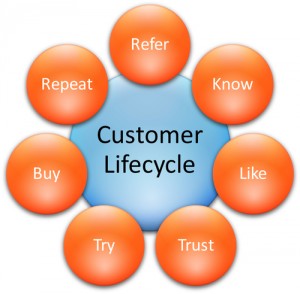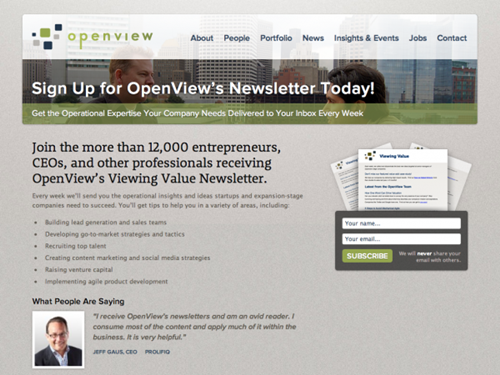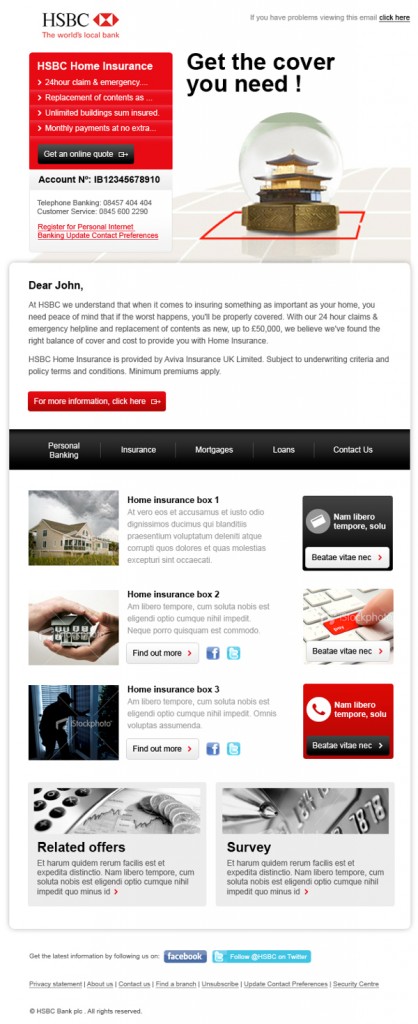 Email marketing is one of the most effective marketing tools for many businesses. According to a study by ExactTarget, 77% of consumers prefer to receive permission-based marketing communications through email.
Email marketing is one of the most effective marketing tools for many businesses. According to a study by ExactTarget, 77% of consumers prefer to receive permission-based marketing communications through email.
Email Marketing is also a way to reinforce relationships through special offers or bonus content and to keep your product or service top-of-mind.
Email client service providers have worked diligently over the years to minimize spam and spam complaints by establishing best practices that Internet Service Providers (ISPs) can trust because they are inundated with so much unsolicited email. Depending on your inbox provider and/or your email solution provider, your newsletter may not even make it into your customer’s inbox.
According to Mailer® Mailer, email is beginning to maintain more of a steady year-round influence. However, “most industries (77.1% of them) scored below 20% for their CTR, indicating that the offers and design of their messages, as well as their segmentation and targeting, require some attention,” they concluded in their annual Email Marketing Metrics Report.
Inbox providers trying to make the environment as pleasant as possible for their subscribers are constantly looking for new ways to determine inbox placement. As proponents of the ‘attract, engage, convert’ model, TopRank’s position is firmly planted in the email engagement camp.
Pros
- Relevant communication. Content relevant to your subscriber is crucial. If you want your open rate to score higher than 20%, then design your message to solve the pain point or informational needs of your audience.
- Relevant timing. If you’ve taken the time to determine the lifetime value of your customers, it makes sense to communicate in a way that’s meaningful to them. Messaging consistent with where they are in the opt-in life cycle will help drive consistency in engagement.
- Improved performance. If the two above criteria are met, then you should see improvement in your overall conversions.
Cons
- Seasonality. Getting subscribers to engage consistently during off-peak times can be difficult.
- Resource allocation. Depending on the size of your business, driving engagement through relevant content may strain your internal resources with email marketing newsletter’s increasing need for content development and/or production requirements.
What the Experts Are Saying
“Consistency and best practices in messaging will go a long way in helping you stay in the [Gmail] zone. Authenticate your sending ID, keep the balance of HTML and text similar, and encourage interaction. … A good subject line is going to get the consumer to pay attention to your message. A better subject line will draw the consumer to open your email. If your content can lure the consumer to a click, you have achieved a trifecta.” Sundeep Kapur, ClickZ, in how to navigate Gmail’s new inbox.
“Marketers should think about the things they can do to make sure their email subscribers continue to look for and read their emails. Gmail tabs make it even more important that email marketers send relevant, valuable content to the people who have opted into their list – content that people will look for.” Gail Goodman, CEO, Constant Contact, MarketingLand.
Email Campaign Best Practices
We’ve outlined a handful of tactics you can use to ensure that your messages are designed not only to engage newsletter readers, but also to inspire them to take action.
1) Identify yourself – Your email campaign will fail if you do not tell the recipient who you are and why you are contacting them. Scads of copy has been written on writing a winning subject line, but if your prospect or customer doesn’t recognize you, most email newsletters will go unopened, regardless of the offer. Most email client servers allow you to add a bit of text at the top to customize “You are receiving this because …” Take advantage of that opening because people often forget what they’ve subscribed to, and you may end up with spam complaints. You also may want to consider a double opt-in if this is a concern, but there are pros and cons to doing so.
2) Keep it short and to the point – A precise concise subject line followed by short declarative sentences should keep your readers opening your email and moving them through the copy to your desired outcome. Not surprisingly, Mailer Mailer discovered that short subject lines (4-15 characters) had the highest average open rate (15.8%) last year.
3) Develop trustworthiness – One simple way to achieve this is to identify on your sign-up form exactly what a subscriber can expect and the frequency of your newsletter. Then, regular communication will solidify the bond (assuming you consistently provide value.) But beware of the urge to over promote. Keep your message educational, relevant and timely and follow the 80/20 rule. Depending on your frequency, you may want to consider reducing that to 10% self- promotion. Alternatively, provide an easy way to unsubscribe to maintain an active and engaged subscriber list.
4) Create visual appeal – We’ve all become a lot more visual and consumers’ expectations have risen accordingly. There are any number of excellent email service providers who offer both beautiful templates as well as the ability to customize the HTML to create exactly the look and feel you want. When adding images, keep the size small or you may risk having them blocked. Another consideration is to include the ‘alt text,’ which stand for alternative text that appears when images are loaded in an email. People may not have images enabled, (this is the default setting in Gmail, for example), so make sure your images have this essential component.
5) Segment your list – Most likely, your email newsletter will serve more than one purpose. You do not want to cram in educational information with event reminders and end with a postscript inviting them to take a survey. For B2B companies, you want to differentiate between prospects and customers at a minimum because they are at a different stage in the buying cycle; one needs to be nurtured and the other represents a possible up sell. For B2C, you can do the same but you can also identify your top customers and offer loyalty incentives. This may be a little trickier for B2B. The point is to tailor your messages accordingly.
6) Provide a clear call to action – If you’ve done all of the above, it’s a simple step to “ask for the order.” Whether it’s a simple request to click through to read a blog post, watch a video demo or share on social networks, make the desired action simple and clear. The CTA isn’t always “buy now.”
Examples of Clear Concise Email Engagement
OpenView®
One way to build trust is to present a polished professional image with your landing page. OpenView Partners describes their relevance to the reader in the headline and sets expectations immediately, letting subscribers know they’ll receive a weekly email filled with operational expert insights. For added trust, they include a CEO testimonial.
They do, however, break one rule of landing pages – generally, you don’t want to include navigation links that could steer a visitor away. In this case, it could be OpenView’s show of confidence, allowing new visitors to conduct further research and only opting-in when they confirm for themselves that the value proposition is worth giving up their email address. I’d be curious to see visitor click stream and bounce rates for this page.
HSBC
HSBC clearly segments their list as this template is specific to the consumer market for home insurance and takes advantage of personalization. Other templates I’ve seen were specific to small business owners, so they get that right. The newsletter boasts strong visuals but may be asking too much of the subscriber by adding Related Offers and Survey Links at the bottom. They’ll want to look at their analytics to determine if they’re getting the results they want or need to do further segmentation. But, they do get it right with their social shares icons prominently displayed.
If you use email as a primary content marketing tool, what’s been your experience with Google’s new email Promotion tabs? Have you seen a decline in open rates?
Read about 29 more content marketing tactics here.
Photo credit: Shutterstock




